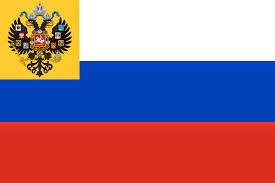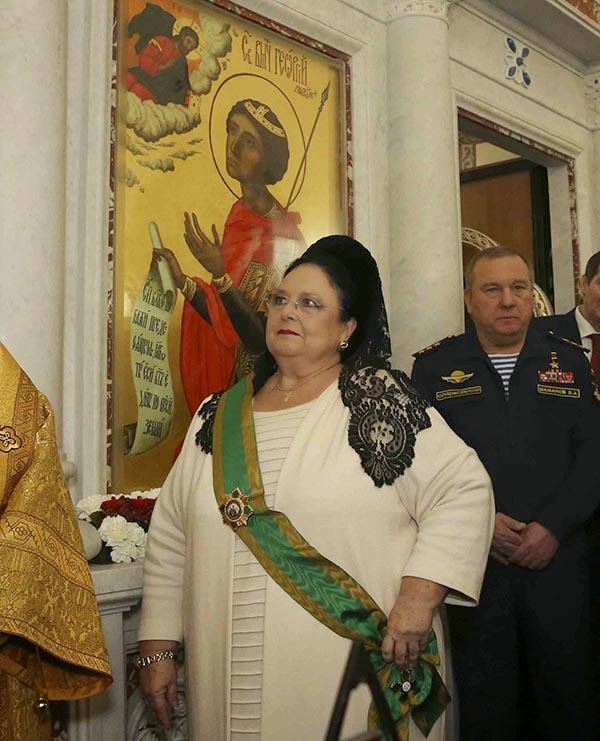On January 29, at the grave of the national hero of Russia, Lieutenant-General V.O. Kappel, "Kappel commemorations" were held, organized by the Russian General Military Union. For the third year in a row, in unity with the Moscow Marines of the Heir to Tsesarevich Alexei Nikolayevich, this important commemorative event is being held by cadet classes.
According to tradition, the commemoration began with a litia for the boyar Vladimir. After that, a roll call of the participants of the Great Siberian Ice Campaign was held. 207 names of hikers, including priests, women, privates and generals, entire families who left their usual occupations and joined the military system for the restoration of law and order on the Russian land.
After the roll call, the cadets set up a post at the graves and saw off Zorya with a ceremony. Cadets and indifferent Russian people laid flowers, and from the Russian All-Military Union and the National Organization "Russian Scout" a wreath was laid on the grave of General V.O. Kappel.
From the ROVS, a few words were said about the personality of Vladimir Oskarovich. About his attitude to the family, to the service, to Russia, to his native Army and to ordinary soldiers. On behalf of the Skobelev Committee, its vice-chairman A.N. Alekaev, who was directly involved in the transfer of the body of the general from Harbin to Moscow, spoke.
Colonel A.I. Golomedov read out the order on the MMCC of Tsarevich Alexei and, for 25 visits to the post in the Donskoy Monastery, presented the badge "For the Glory of the Russian Army" 2nd degree to vice non-commissioned officer Timofey Yermashov.
A.S. Terzov
Imperial Russia





@Tsarisme a twitter
Articles més populars
-
Cossacks from all over Russia are participating in Ukraine, there are 1,500 of them. This was announced by the Deputy Governor of the Krasn...
-
An agreement on cooperation in the field of educational activities has been reached between the Russian Imperial Union-Order (RIU-O) and ...
-
Cossacks of the LPR commemorated their ancestors who were victims of political repression Representatives of the Cossacks and the public of...
-
The grandson of Admiral Alexander Kolchak died. This was announced by the Union of the Descendants of Gallipoli on Facebook. Kolchak...
-
A Memorial plaque dedicated to the knight of honor Mikahil- Drozdovsky 1881-1919) has been unveiled Rostov-on-Don. This is another project t...
-
"Drozdovtsy"(«Дроздовцы») On November 21th the General Drozdovsky is honoured. In the Cathedral of Ekaterinodar , in 201...
-
The director and screenwriter of the film “The Last Secret of General Kappel”, one of the participants in the expedition to find the bod...
-
The ideas set forth in the monograph by N.N. Lysenko “The genocide of the Cossacks in Soviet Russia and the USSR: 1918–1933. The exper...
-
In the Temple of the Holy Royal Martyrs in Razdol'ye village, was consecrated the monument to the Holy Tsar Martyr Nicholas II on May...
-
On April 12, 2022, on the 780th anniversary of the Battle on the Ice, associates of the Tula Department of RIU-O laid flowers at the Alexan...
Arxiu
-
►
2021
(34)
- ► de desembre (6)
- ► de novembre (1)
-
►
2020
(14)
- ► de novembre (1)
- ► de setembre (3)
-
►
2018
(14)
- ► de desembre (1)
- ► de novembre (4)
-
►
2015
(54)
- ► de desembre (6)
- ► de novembre (8)
- ► de setembre (3)
-
►
2014
(40)
- ► de desembre (10)
- ► de novembre (7)
- ► de setembre (1)
-
►
2013
(20)
- ► de desembre (1)
- ► de novembre (5)
- ► de setembre (2)
-
►
2012
(26)
- ► de novembre (6)
- ► de setembre (2)
-
►
2011
(10)
- ► de desembre (1)
- ► de novembre (2)
- ► de setembre (3)
-
►
2010
(9)
- ► de desembre (2)
- ► de novembre (1)
- ► de setembre (2)
-
►
2003
(1)
- ► de desembre (1)
-
►
2002
(1)
- ► de desembre (1)
-
►
2000
(1)
- ► de desembre (1)
-
►
1999
(1)
- ► de novembre (1)
-
►
1998
(1)
- ► de novembre (1)
Search
29/1/22
"Kappel commemorations" were held, organized by the Russian General Military Union
27/1/22
Tallinn: restoration of the chapel in memory of the soldiers of the White Russian Northwestern Army
On January 27, 2022, in the capital of Estonia, Tallinn, the restoration of the chapel in honor of the Great Martyr George the Victorious, which is dedicated to the memory of the soldiers of the North-Western Army, who fought against the Bolsheviks during the Civil War, began, reports Foma.Ru.
The rite for the founding of St. George's Chapel, co-served by the clergy, was led by Metropolitan Eugene of Tallinn and All Estonia. The ceremony was attended by Mayor Mihail Kõlvart, who noted that it is important for Estonia to preserve the memory of the Northwestern Army.
“Many Tallinners, including famous people, supported the initiative to restore St. George's Chapel, and one of the inspirers was Evgeny Tomberg. According to Orthodox tradition, donations from parishioners and philanthropists were involved in the restoration of the chapel. We thank everyone who took the restoration of the memorial to heart,” the head of the city said.
During the laying of the chapel, a time capsule was laid in its foundation, where they put a mortgage letter, drawings of the chapel, the latest issue of the Postimees newspaper, the January issue of the Põhja-Tallinn Newspaper, souvenirs and coins.
The Northwestern Army, which fought against the Bolsheviks, was forced to retreat to the territory of Estonia at the end of 1919, where it was disarmed and liquidated. In Estonia, a typhus epidemic began in the ranks of the SZA. Several typhoid hospitals were located in the Tallinn region of Kopli (Koppel). The northwesterners who died in them were buried in the area adjacent to the Koppel Lutheran cemetery. According to researchers, about 700 people were buried in mass graves.
St. George's Chapel was erected in 1936 at the cemetery of the North-Western Army in the Tallinn district of Kopli according to the project of architect Alexander Vladovsky. The chapel is dedicated to the memory of those who died in the Kopli typhoid hospitals of the North-Westerners.
In the late 1940s, the chapel was desecrated and destroyed, and the icon of the Great Martyr George the Victorious, which was in it, was shot, the cemetery of the North-Western Army was destroyed, and an electrical substation was built on its territory.
Preparations for the reconstruction of the chapel began about two years ago. In the autumn of 2021, the project for the reconstruction of the memorial chapel, developed by the architectural bureau AB Ansambel on the order of the St. George Society, was transferred to the Tallinn City Hall. The city allocated the necessary amount for the construction and held a tender to select a contractor.
The walls of the chapel are currently under construction and should be completed by the end of summer 2022. St. George's Chapel is being restored, including on voluntary donations.
24/1/22
The Cossacks of Lugansk commemorated their ancestors who were victims of Communist repression
Cossacks of the LPR commemorated their ancestors who were victims of political repression
Representatives of the Cossacks and the public of the Republic took part in funeral services for the Cossacks, who became victims of political repressions in post-revolutionary Russia of the 20th century.
January 24 is a tragic date in the fate of the Cossacks: on this day in 1919, the Organizing Bureau of the Central Committee of the RCP (b) adopted the secret “directive on decossackization”, developed by the chairman of the All-Russian Central Executive Committee of the RSFSR, Yakov Sverdlov, which laid the foundation for mass repression against representatives of the Cossacks.
Cossacks of all territorial Cossack societies took part in the memorial events. The Cossacks of Lugansk prayed for their ancestors in the church in honor of the icon of the Mother of God "Vladimirskaya" of the Holy Kazan parish and in the church of the holy martyrs Guriy, Samon and Aviv.
“Every year the Cossacks in their yurts and villages go to churches to honor the memory of the repressed Cossacks of 1919. Therefore, we honor and always remember this date, ”said Sergei Dorokhin, ataman of the Lugansk district of the Don Cossacks of the Great Don Army.
Aleksey Selivanov, ataman of the international public organization "Faithful Cossacks", noted that "Cossacks of Russia and the whole world" remember the mourning date today.
“They tried to destroy the Cossacks as the backbone of Russia, as a traditional part of Russian society, as a pearl in the crown of the Russian empire, as people who collected and created Russia, as representatives of a great culture. But the Cossacks were not destroyed - the states on the territory of the Russian Empire are changing. and the Cossacks remained. And the contribution that the Cossacks are making today to protect the fighting Donbass, to the gathering of Russian lands, cannot be overestimated. Cossacks were, are and will be!” he said.
The cleric of the Church of the Holy Martyrs Guria, Samon and Aviv, Archpriest Alexy Slyusarenko, in his sermon after the memorial service, noted that there are no official figures on the number of victims of political terror, since all the archives about this were destroyed, but "a lot of people suffered."
“In fact, no one knows how many extrajudicial reprisals there were - there were no papers left, only God knows how many there were in fact, especially since the repressions against the Cossacks were not limited to 1919 - they continued for many years. This is very bitter, because the Cossacks put a lot of effort into the defense of our Motherland. And even in this last war, as soon as problems began here, the Cossacks were the first to come to the rescue, and they came from all over Russia!
The priest urged to pray in churches and cell prayers for all whose names are known, "and whose names are unknown - God knows about them."
“Save, Lord, you for these prayers. I wish you God's help in your service, in your work in our time, which is also difficult, not easy, so that you, like them, are faithful to God, the Motherland, the Don and, in general, to all the Cossacks, ”added the archpriest.
Recall that with the blessing of His Holiness Patriarch Kirill of Moscow and All Russia, every year on January 24, memorial services are held in Orthodox churches in Russia and around the world for all the murdered Cossacks and their families.
Website of the "Faithful Cossacks" (vk.hrest.info)
Aleksey Selivanov, ataman of the international public organization "Faithful Cossacks"
4/1/22
New Baron Ungern graffiti in Novo-Nikolaevsk (Novosibirsk) at the place of his execution
A newly applied graffiti depicting Baron Ungern von Sternberg at the place of his execution was painted in Novo-Nikolaevsk (Novosibirsk). The graffiti appeared on the wall of house 10 along Fabrichnaya Street with the image of Baron Roman Fedorovich Ungern von Sternberg, a hero of the Civil War, one of the outstanding leaders of the White movement and implacable fighters against Bolshevism. According to historians, it was at this place that the baron was shot by the Bolsheviks 100 years ago.





















